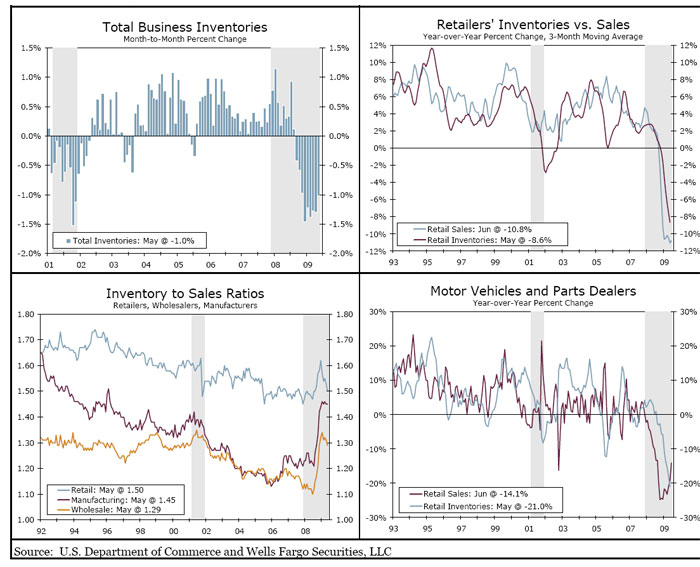There is no question the recession has caused most companies to look really hard at inventory levels - perhaps sometimes to the point of hurting the top line due to stockouts.
Late last week, the US government announced that business inventories fell in May by 1%. As can be seen in the upper left quadrant of the chart below, taken from a report by Wells Fargo Securities, this is the ninth consecutive month there has been a decline in business inventory levels.
Meanwhile, as shown in the upper right, retail inventories dropped 8.6% in May - but sales fell even faster, at -10.8%.
All this means that the overall inventory to sales ratio, which has been dropping steadily across all sectors from 1994 to 2008, has actually been rising sharply during the recession, as businesses can't cut inventories as fast as sales have disappeared. (See chart in lower left quadrant.) However, as can be seen from the recent dip in all three lines/sectors on that chart, "businesses have regained some control over inventories," as Wells Fargo notes.

It is interesting to note that during the last recession, roughly 2001-2002, retailers were able to decrease inventories dramatically, much faster than the pace of sales decline. Not so in this downturn.
It is also interesting to see the relative progress that manufacturers made on inventories during the 1990s, as at the start of the decade, on average, they operated with a much higher inventory to sales ratio than wholesalers did, but basically that gap was eliminated by 2001, though it has widened again in the past year.
Agree or
disagree? What is your perspective? Let
us know your thoughts at the Feedback button
below.
|